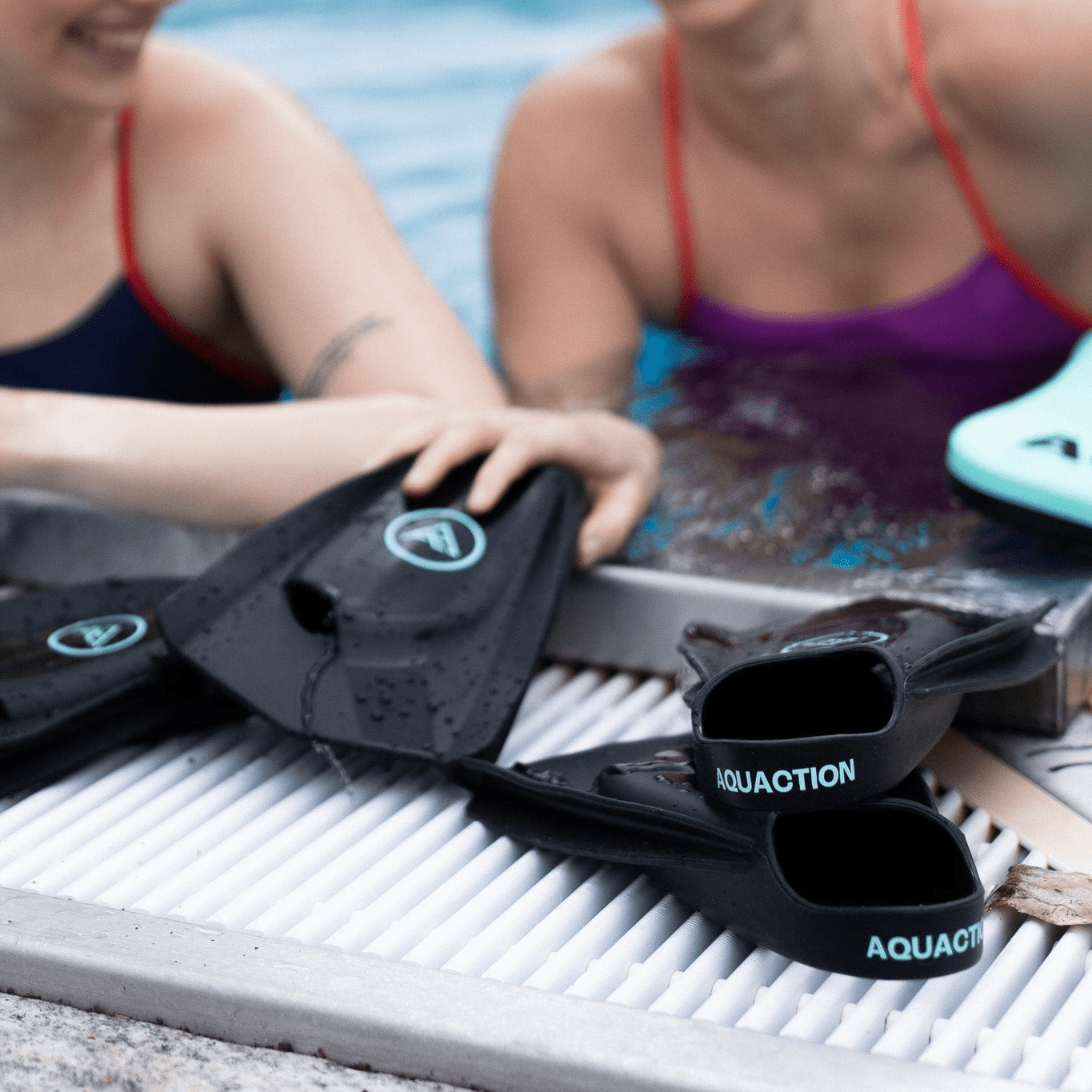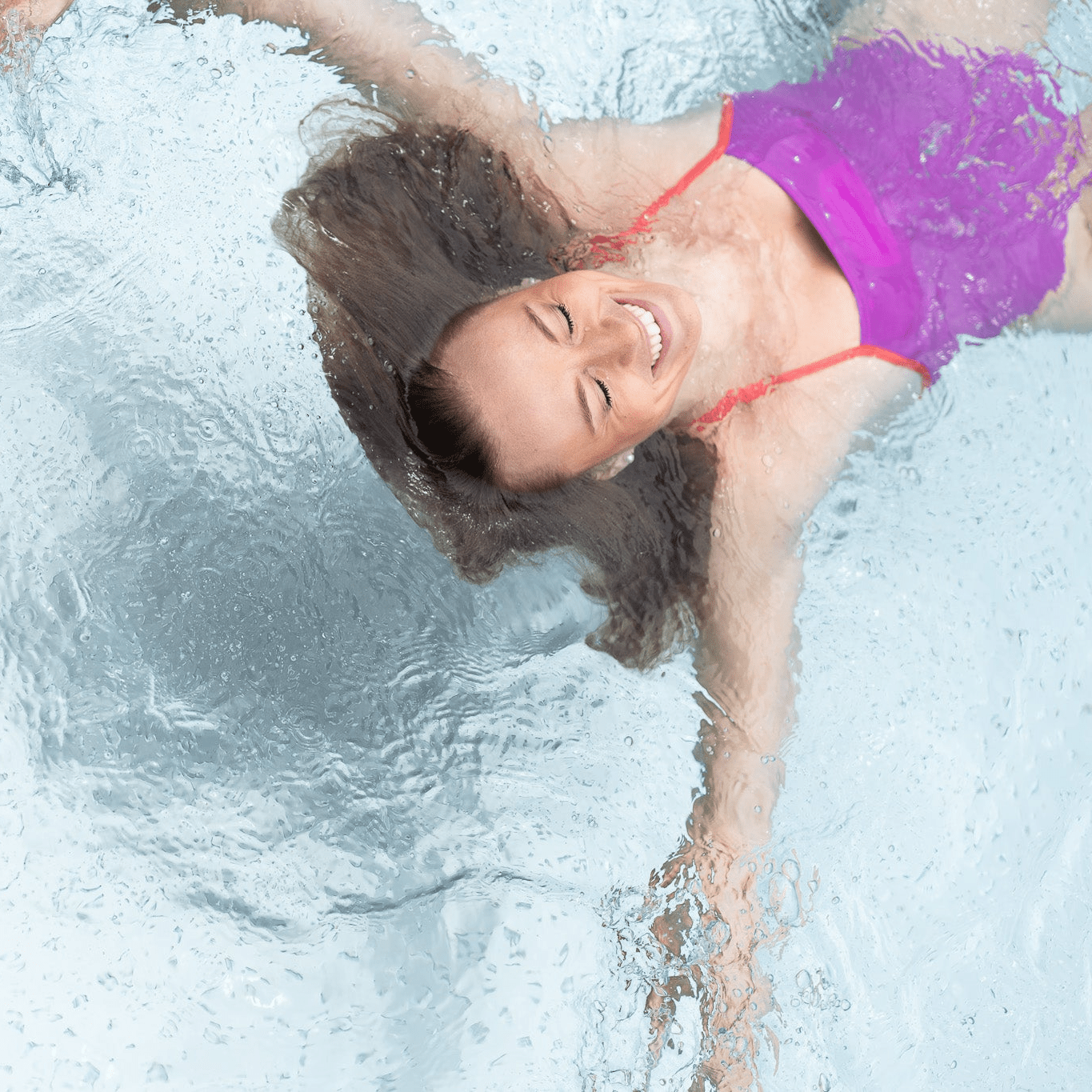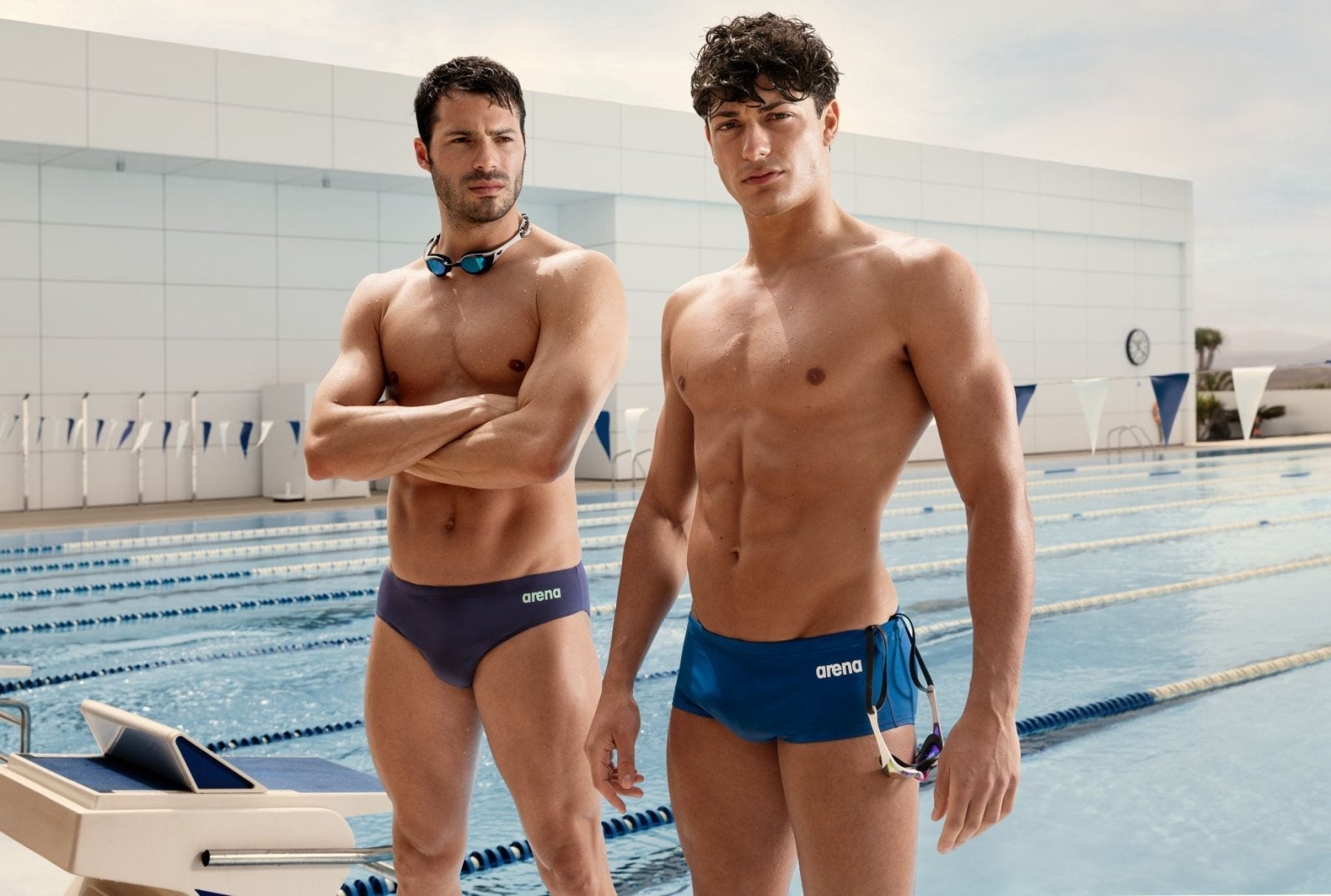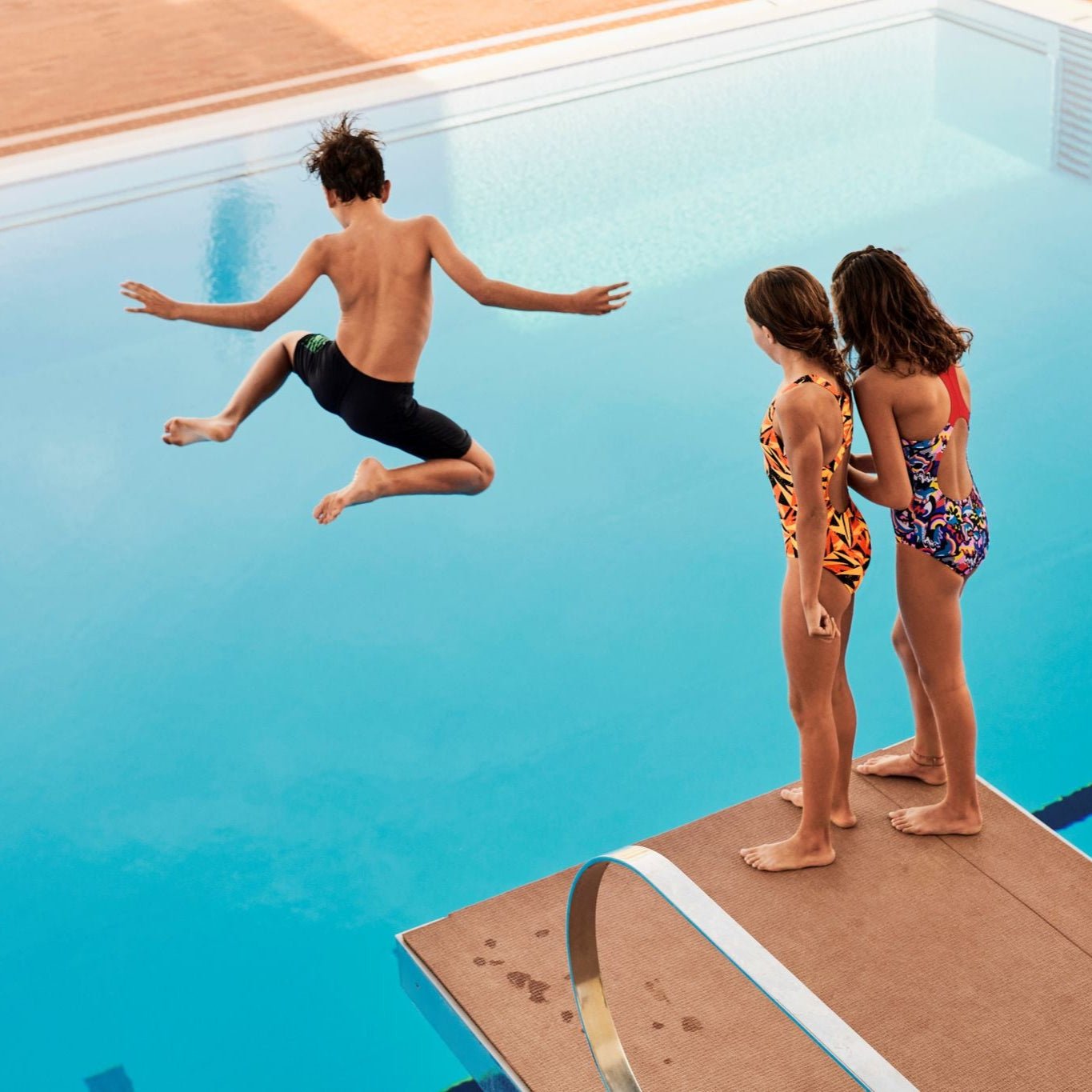To swim with a toddler, to the swimming hall together and towards swimming skills!
When your child is one year old, he has passed the baby swimming time and you can go to the swimming pool together to learn new skills. During the first visits to the swimming pool, the child encounters a lot of new things: the water in the pool is exciting and also the new environment, echoing sounds and strange people can surprise. In this guide, you will find tips for the first swimming sessions, starting a swimming school, and choosing a children's swimsuit and children's swimming goggles and equipment.
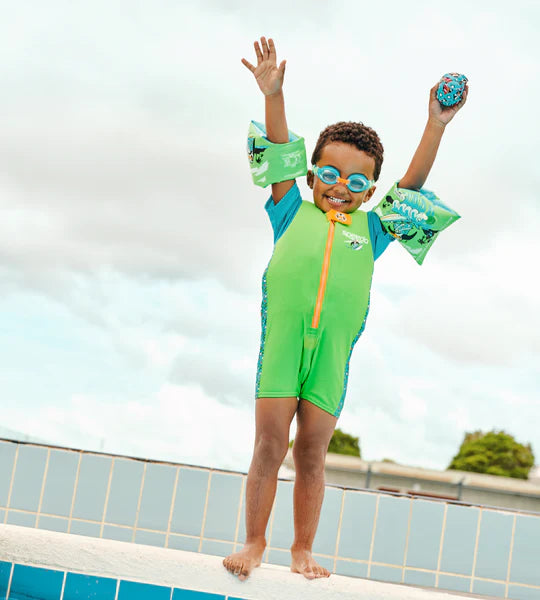
To swim with a child, where can you find a swimming school?
Swimming schools are organized in swimming pools and, in the summer, also on beaches. They are organized by, among others, municipal sports departments, swimming clubs and other associations, as well as private companies.
On the Suh.fi website you will also find tips on how you can get used to the water and practice swimming skills.
When choosing a swimming school, it is a good idea to consider the following things:
- Getting to know the swimming pool Before starting swimming school, it is a good idea to visit the swimming pool in advance. It is a good idea to do this a few times at your leisure. The depth of the pool, the noise of the water, the splashing of water and other people can be stressful the first few times. When the place is already familiar, it does not in itself stress the swimmer and he can concentrate on the lessons in the swimming school when the swimming pool is already a familiar place.
- Correctly assessing a child's skills When choosing the right level of swimming school group for a child, it is a good idea to assess the child's skills at the lower end in order to find the right level of teaching group. Swimming schools have built in requirements for those entering the groups, which help to bring the starting level of the entire group as close as possible to each other. This facilitates the implementation of the group's curriculum and thereby the development of each student along with the group.
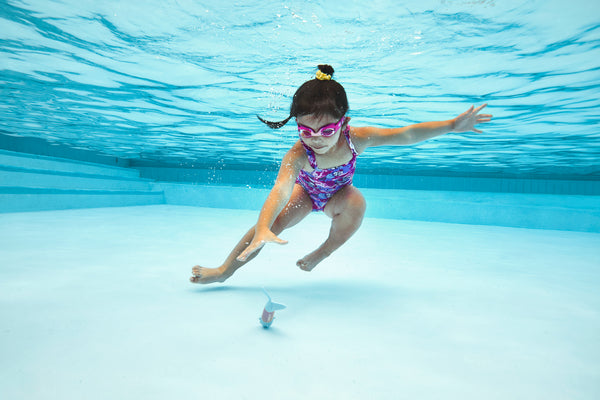
To the swimming pool or spa with the child, tips for visiting the swimming pool
Finnish Lifesaving Association's tips for indoor swimming pools
- A child gets used to the water best when there is a lot of movement, playing and activity in the water. All kinds of movement in the water also practice balance. To help get used to the water, you can also use various swimming toys , which will help the child get used to the water without even noticing.
- If you use floats, practice without aids from time to time. Remember that the child will be supervised at all times, even if the child can already move independently with hand floats or a floating swimsuit.
- Getting used to the movements and splashes of water and moving independently in the water are the first exercises towards immersion. Water can also be poured over the child by mutual agreement or the child can be encouraged to immerse his face in the water himself. At this stage, it is good to practice exhaling into the water and blowing bubbles. Do not teach him to hold his nose. It is better to blow bubbles through his nose. Blowing can be practiced under the guise of play, and children often find bubbles bubbling out of the parent's mouth amusing.
- While swimming, you can learn to dive and collect objects from the bottom. At first, it is worth practicing this at shallow depths, and the first successful experiences can be gained by, for example, giving the object to the child when the child is blowing bubbles and reaching for the object. Gradually, the child will dare to dive deeper.
- Always remember to proceed on your child's terms. Children are different and some take time to get used to the water and learn different skills.
As your skills improve, you can find more tips for practicing swimming with your child on the website pulahda uimaan.
Children's swimming goggles
Are swimming goggles necessary for a child? This depends a lot on the child's age, the sensitivity of their eyes, and the activities they are practicing.
Swimming goggles are not essential or even necessary for baby swimming, but later on they are one of the most popular pieces of equipment in swimming schools.
With swimming goggles, a child usually dares to put their face in the water more easily, because the water does not cause burning in the eyes. The view also remains clearer than when diving without goggles.
How to choose the right swimming goggles
Testing glasses
- First, read the section on testing swimming goggles in our adult swimming goggles guide . This will help you find out if the swimming goggles you are trying out are tight and comfortable enough for your child. However, please note that children's swimming goggles do not normally have as strong a suction cup as adult models. This is due to the softer and larger seals. However, the lens should fit tightly throughout and also create a small suction cup.
- Also ask how the glasses feel on the child. Children are normally very sensitive to the pressure of glasses, and if the child feels that the glasses are heavy, they may not wear them.
Choosing a glass model
Glasses for children are available in both small and large fits.
- Greater fit - The pressure is directed further away from the sensitive skin around the eyes, making the goggles feel more comfortable on the head. Of all the goggles, you will find the best fit in mask-style goggles, which even the most sensitive children usually accept as their goggles. However, due to the greater fit, the goggles are not ideal for jumping training, as the goggles can then more easily roll off the head. Best for first swimming lessons, leisure swimming, and beaches.
- Smaller fit - A smaller fit adds a little more pressure, but also helps the goggles stay on your head better when jumping. These goggles are great for all types of swimming, including younger competitive swimmers.
Children's glasses often feature quick and easy fastening options, i.e. button-adjustable tensioning. This also makes it easier for the child to adjust the glasses to the appropriate tightness themselves.
Once the lens has been selected, it is still possible that the lens is available in multiple lens colors.
You can read more about choosing lens color here.
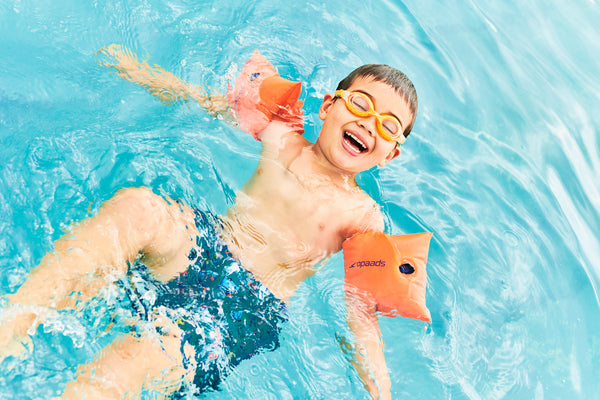
Children's hand floats or a floating swimsuit?
We have a wide range of floating swimming aids for small and older children. All products in our range are manufactured according to European safety standards. However, it should be remembered that the child must be supervised at all times, even if the child can already move independently with hand floats or a floating swimsuit. However, floating products are a good help both in the swimming pool and on the beach. Children often like them a lot and, for example, a floating swimsuit encourages a timid child to get used to the water.
Children's hand floats
Inflatable hand floats are the most popular swimming training products for children. Due to their small size, they are easy to take with you to the beach or swimming pool. In our selection you will find hand floats for children weighing 8 - 30 kg. The floats keep the child in an upright position, but for a child who is just getting used to the water, we recommend a floating swimsuit.
A swimming vest for a child or a floating swimsuit
A swim vest or a floating swimsuit is a good choice to help your child get to know the water. The jumpsuit-style suit has short sleeves and legs, which helps your child stay warmer in the water for longer. The swim vest has a lockable zipper and a Velcro closure at the front. We recommend starting with a floating swimsuit and moving on to either a swim vest or a swimming belt as your skills improve.
What should be considered when choosing a children's swimsuit?
In our selection you will find swimsuits for babies (0-2 years old), toddlers (2-4 years old), as well as children and teenagers (6-16 years old).
Children's swimsuits are available in many fun patterns and colors that are especially popular with children.
If you are looking for a swimsuit for the beach or on holiday, we especially recommend bright colours such as pink and orange. Neon colours such as neon green and neon yellow stand out best in dark lake water.
Choosing a children's swimsuit size
We provide European sizes in cm, in addition to the sizes stated by the manufacturer. If you are unsure between two sizes, we recommend choosing the larger size for Arena children's swimsuits, while Speedo children's swimsuits are true to size.
Read more about choosing children's swimwear here.








